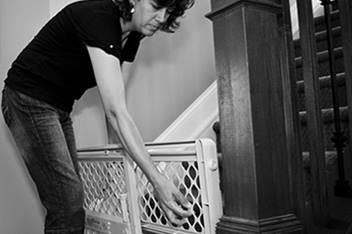High Chair and Chair-Related Injuries
Selecting A High Chair
-
Sturdy
- Look for a high chair with a wide base that does not feel “wobbly” or “flimsy.”
- If the high chair you are using has a locking mechanism, make sure you hear and feel this locking mechanism click into place when you set up the chair, when you adjust the seat and when you snap the tray into place.
- If the high chair has wheels, make sure they are locked before you place your child in the seat.
- Certified
- The JPMA (Juvenile Products Manufacturers Association) certifies that high chairs meet ASTM International safety standards. Look for a high chair that has a “JPMA Certified” seal either on the high chair itself, on the box, or in the chair’s instruction manual.
- Check for recalls.
- Check www.recalls.gov to see if the high chair has been recalled for injury hazards. Millions of unsafe high chairs have been recalled during recent years.
Tips for Safe Use
- Always use the safety restraints.
- Most high chair-related injuries can be prevented by correctly using the safety restraints every time your child is in the seat.
- Make sure all the straps are buckled, including the crotch strap if there is one, and make sure the straps fit snugly against your child. If he can wiggle out of the strap, it is not tight enough.
- Also make it a rule that high chairs are for sitting only – no standing, climbing or playing on the chair should be allowed.
- Keep the area around the high chair clear.
- Keep tablecloths, placemats, sharp silverware, plates and hot food/liquids out of your child’s reach.
- Also make sure that the high chair is not too close to the table, a counter or the wall. A child can knock over a high chair by kicking their feet into these objects.
- Stay with your child during meal time.
- An unsupervised child is more likely to try to escape from the high chair or choke on his/her food. Use meal time to spend some enjoyable time with your child.
Additional High Chair Resources:
-
Pediatric injuries associated with high chairs and chairs in the United States, 2003-2010
- PubMed Abstract - December 2013
- Press Release - December 2013



